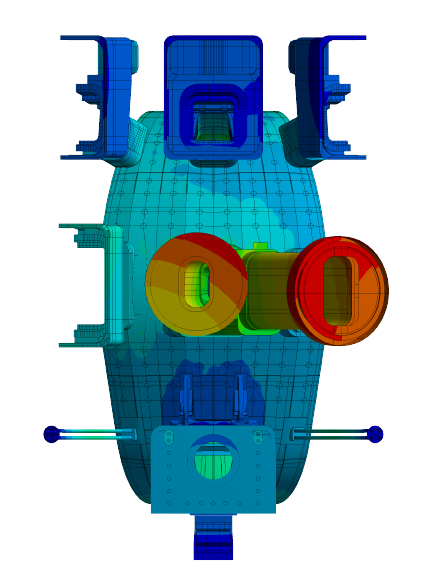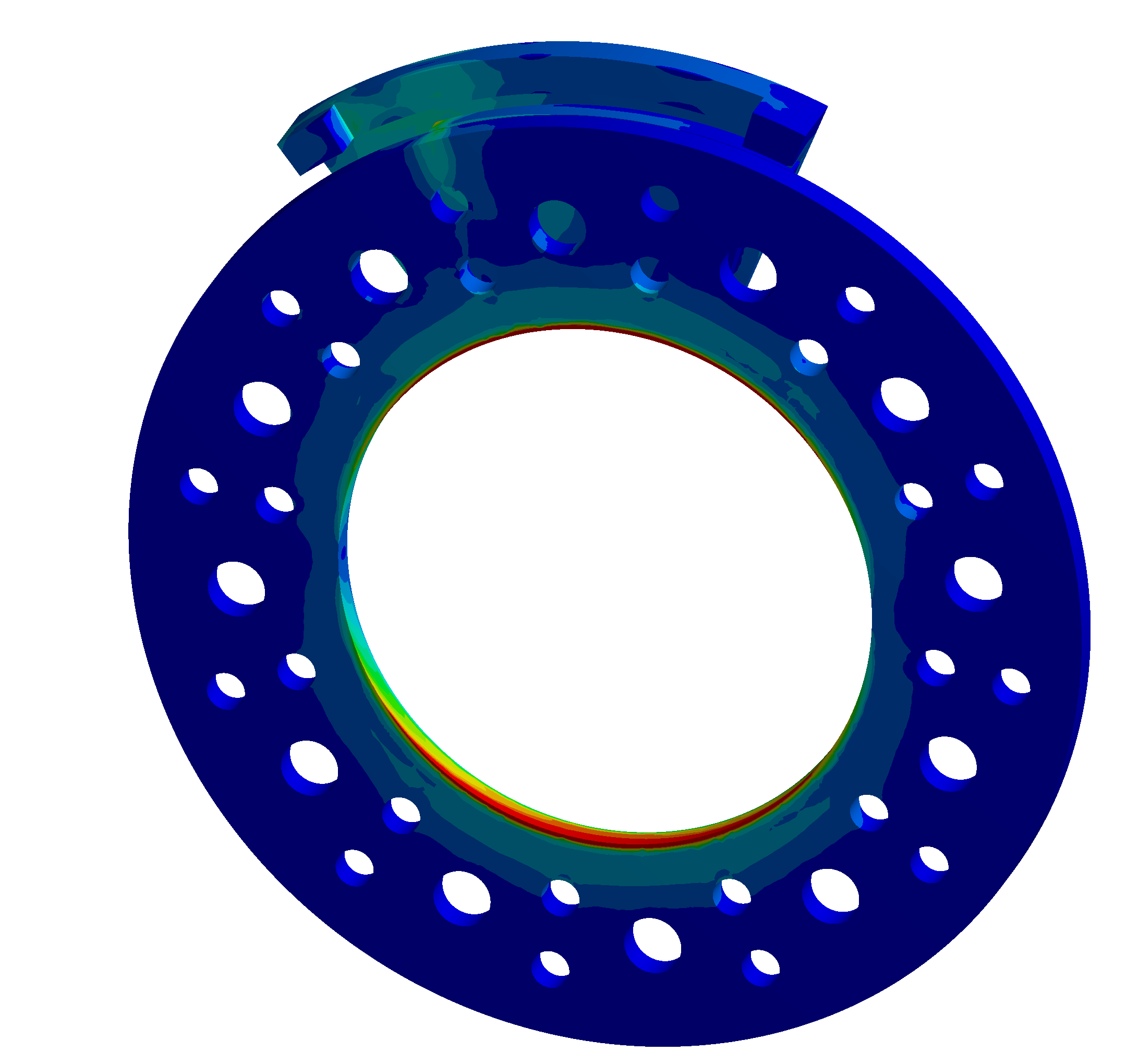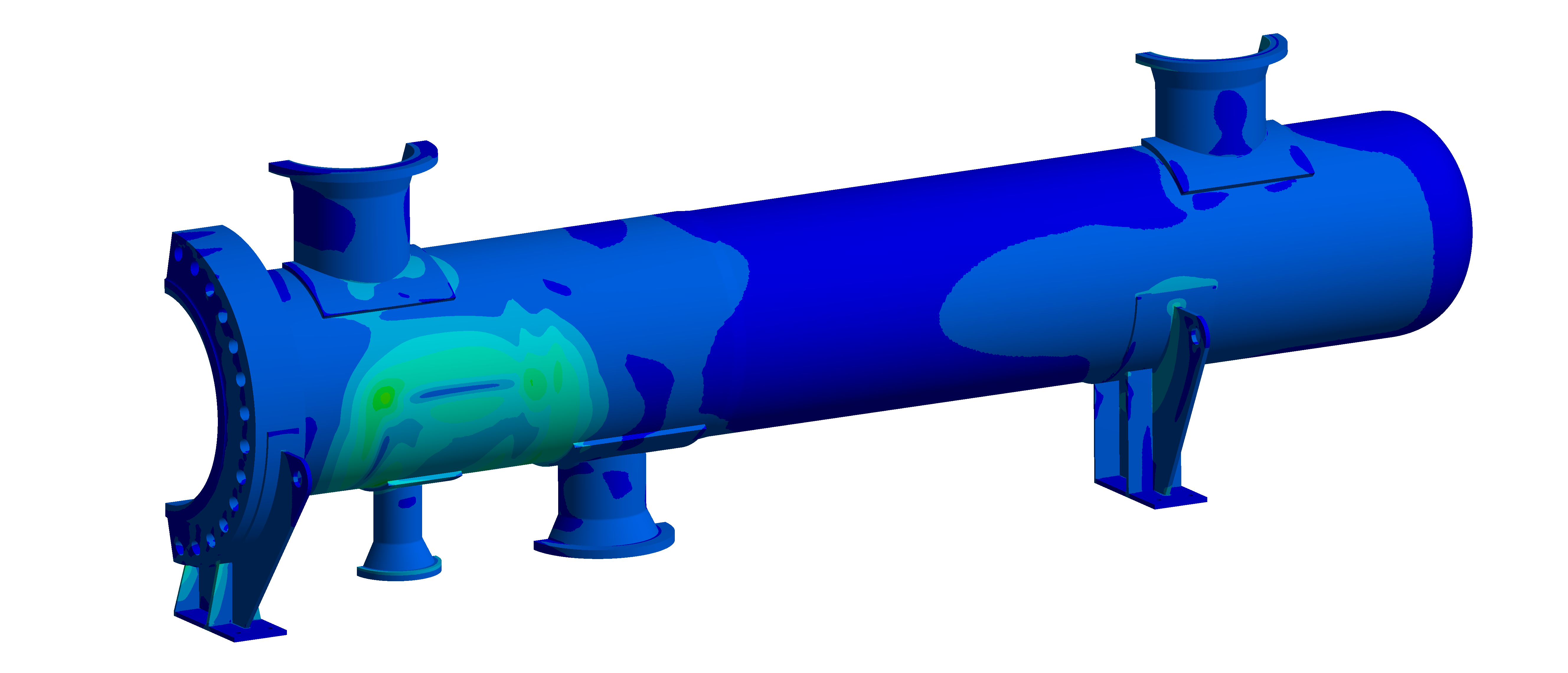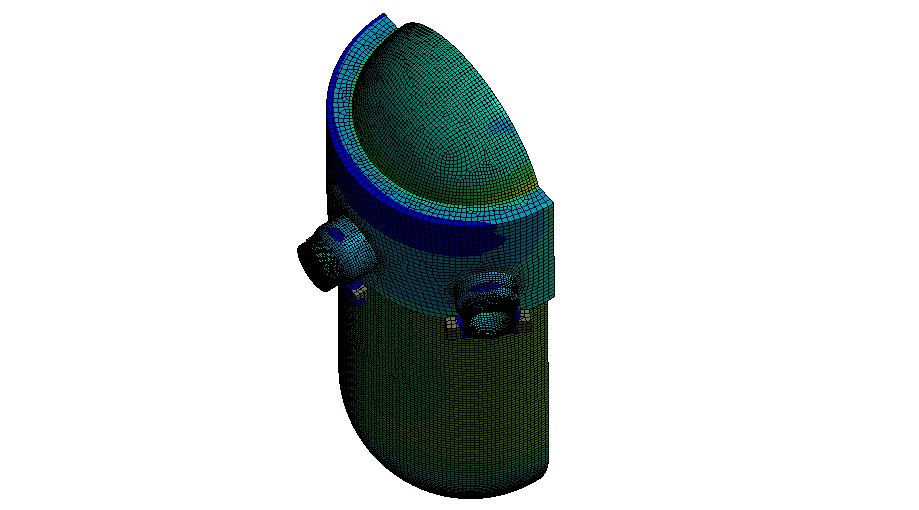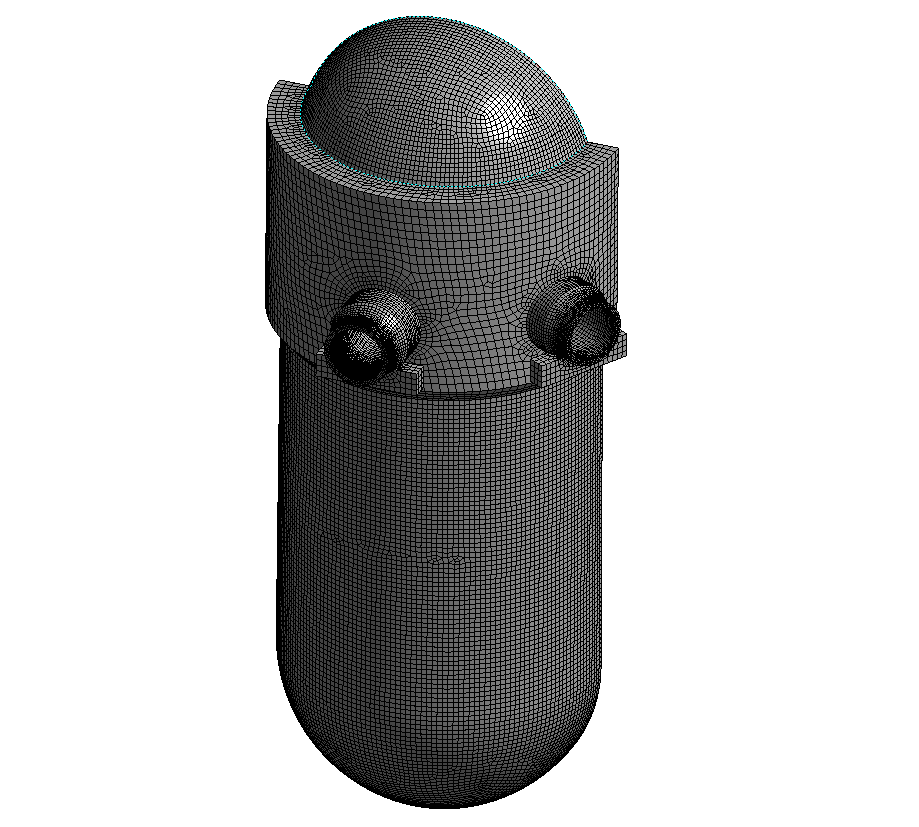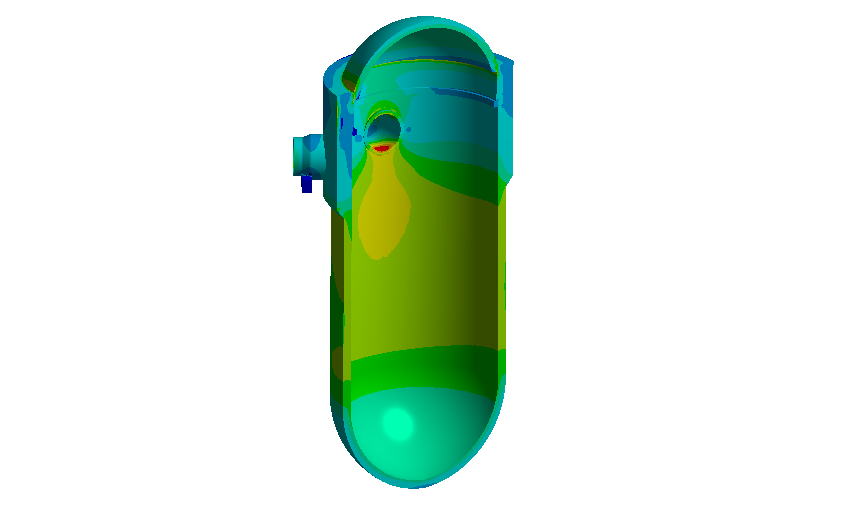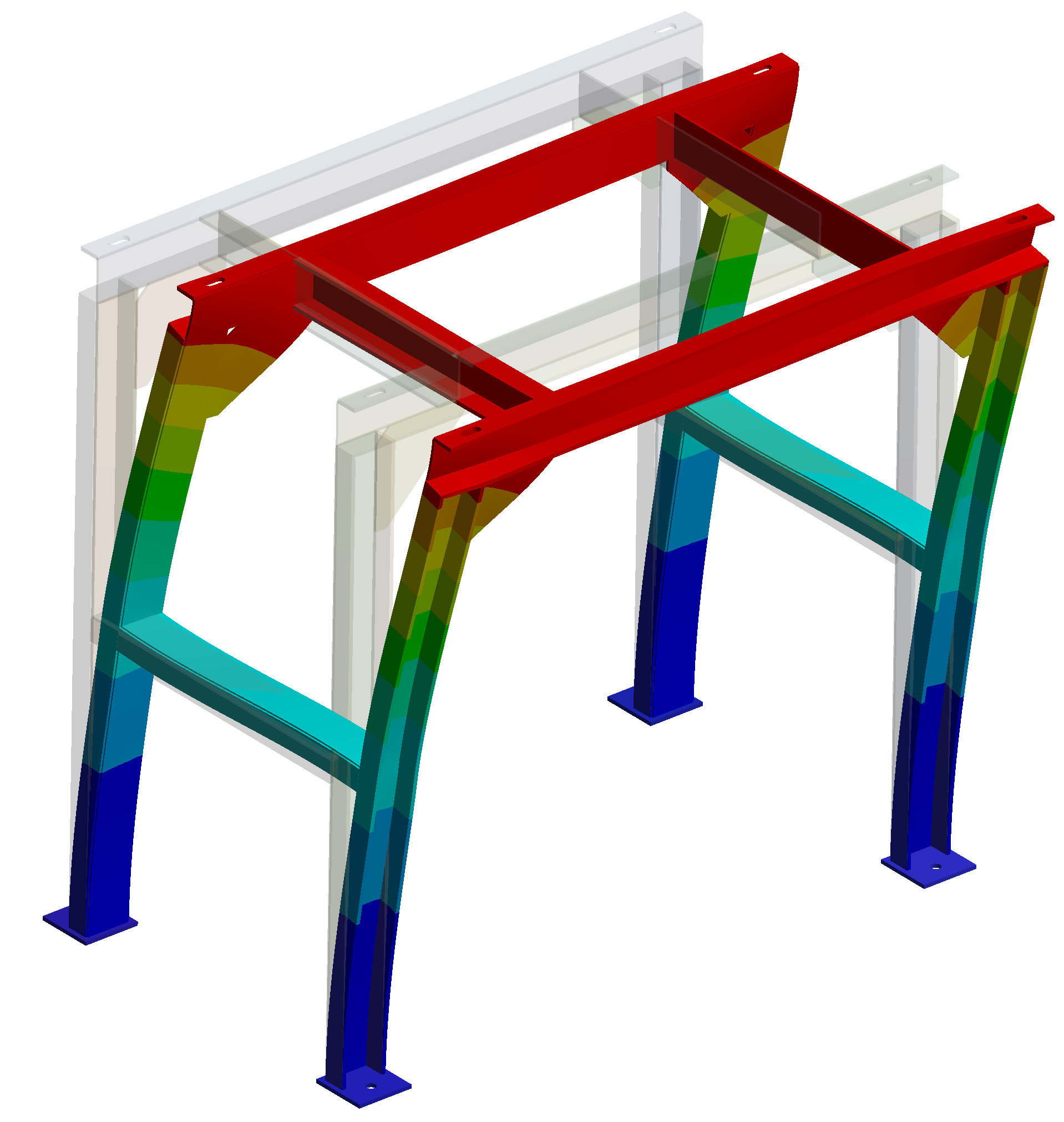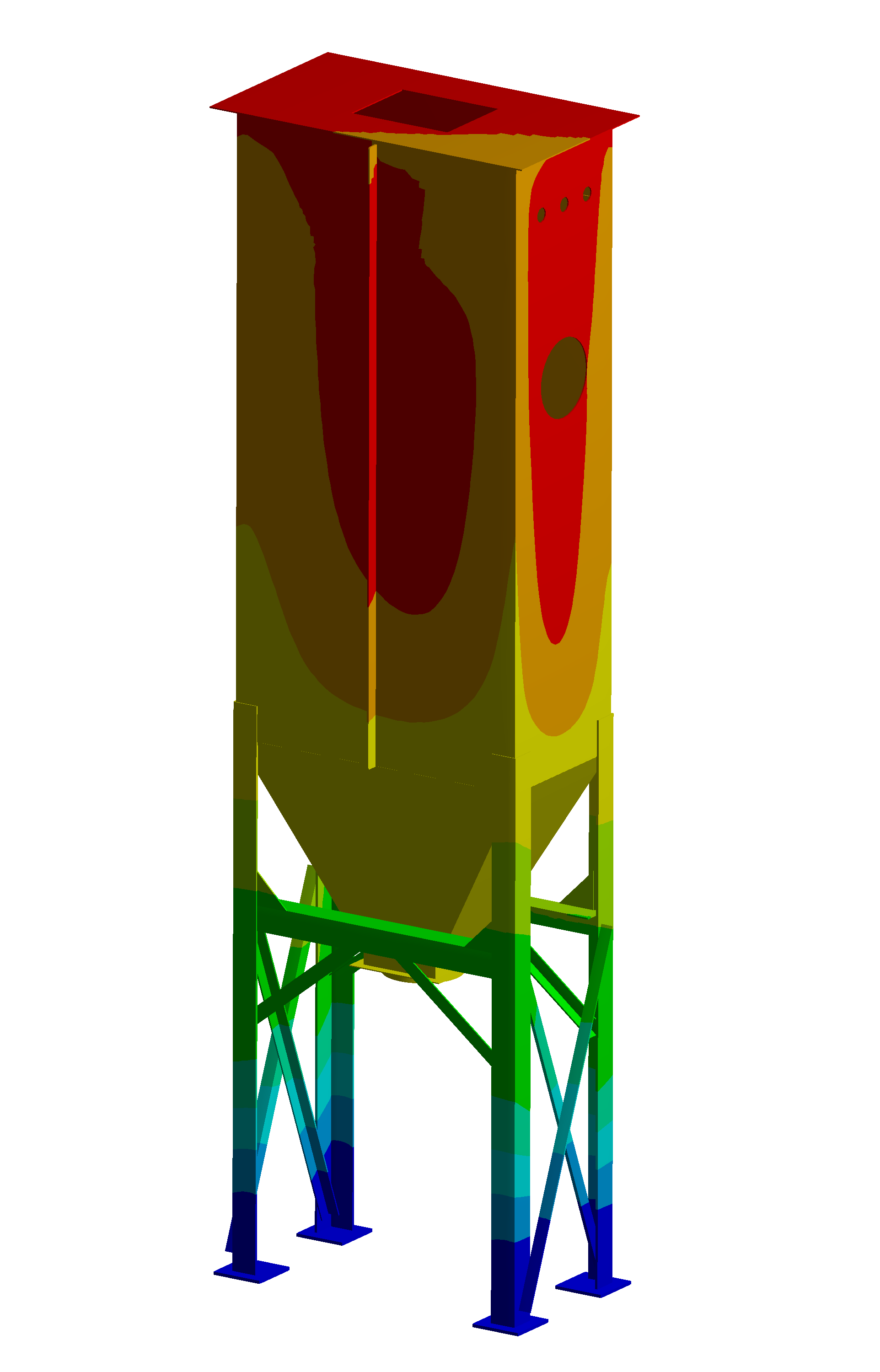Seismic Calculations
G-met Technologies performs seismic sizing calculations for all types of industrial equipment, special machines or nuclear irradiation devices.
The design under seismic loading concerns the mechanical resistance of structural elements, their assemblies (welds, bolts) and their anchorages to civil engineering.
There are several seismic design methods used in the industry, including:
- The simplified static analysis method consisting of applying uniform acceleration at the peak of the spectrum to the structure. Depending on the type of structure, this method is not always conservative [1]. Thusly, a multiplicative coefficient of 1.5 is often used.
- The spectral modal analysis method consists of determining the eigenmodes of the structure and then performing the spectral response by combining the eigenmodes (SRSS or CQC for example).
- The transient analysis method, which, unlike the two previous ones, is concerned with the temporal response of the structure under the effect of seismic loading and not only with an estimate of the maximum forces induced. This method is much heavier in the calculation.
(1) Seismic calculation – Non-conservatism of the spectrum’s calculation “peak” – Philippe MAUREL 2010.

